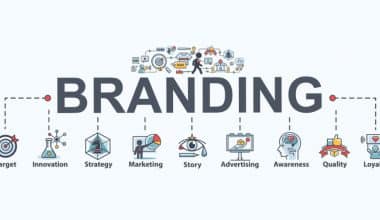Walking into a modest bakery in the center of a busy city on a cold morning may be transforming. The warm glow of the lights, the quiet background music complimenting the rhythmic dance of the bakers, and the tempting perfume of fresh bread—it’s a sensory encounter that not only elevates my emotions but also permanently imprints the bakery’s brand on my memory. As a professional working with Lamphills, I’ve discovered that this isn’t simply a happy coincidence; it’s the power of sensory marketing. While most marketing is focused on pictures and text, sensory marketing involves all five senses, resulting in a more immersive and memorable brand experience.
According to a recent study published by Harvard Business Review, consumers exposed to multi-sensory marketing efforts are more likely to recall the brand and have a more positive perception than those exposed to traditional ads. This statistic emphasizes the growing importance of sensory marketing in today’s digital age, when customers are inundated with information and competition is severe.
Beyond the well-known strategies of sight (visual branding) and sound (jingles), a world of neglected sensory experiences is waiting to be discovered. Let’s go further and discover the hidden potential of multi-sensory marketing, which can elevate your brand interactions from generic to highly memorable.
What is Sensory Marketing?
Sensory marketing refers to marketing methods that use the senses to affect consumer perception and behavior. This type of marketing can make more memorable and emotional connections with customers, fostering loyalty and influencing purchasing decisions.
Interestingly, the Harvard Business Review notes that firms that use multi-sensory experiences might improve consumer satisfaction and loyalty by engaging more successfully with their environment.
Key Takeaways
- Sensory marketing engages all five senses to create a more immersive and memorable brand experience, enhancing customer satisfaction and loyalty.
- Utilizing sensory elements like scent, sound, and touch can significantly increase dwell time in stores and influence purchasing behavior, as demonstrated by studies on ambient scents in retail environments.
- The Sensory Experience Template helps businesses strategically implement sensory marketing by mapping out customer journeys and identifying touchpoints for sensory engagement.
- Sensory marketing is a powerful tool for standing out in a crowded market, offering brands a dynamic way to connect with customers on an emotional level and create lasting impressions.
How Sensory Marketing Works
Sensory marketing, using any of the five senses, is frequently used at the start or middle of the buyer’s journey (similar to the Abercrombie & Fitch example above). However, it is becoming more typical for firms to provide sensory branding experiences at the end of transactions.
Whether it’s a sound, vibration, or picture that customers encounter at the end of a transaction, sensory branding can create a sense of comfort and confidence in their purchase. For example, Visa designed a sensory experience that occurs when a customer’s transaction is completed.
Next, to assist you in understanding how you might successfully utilize sensory branding in your marketing activities, consider five examples of successful organizations.
The Benefits of Sensory Marketing
- This is what customers desire.
- Colors enhance brand recognition.
- Music and sound help customers remember you.
- The more senses you incorporate into your inbound and outbound marketing, the more brand loyalty you develop.
- It makes a nice impression, so buyers will have happy feelings when they think about your brand.
- It allows you to attract more customers. Not every customer can hear or see. As a result, having an accessible brand that incorporates more senses into your marketing strategy is unquestionably beneficial.
- It has an impact.
The Five Senses In Marketing
In marketing, the five senses include:
- Sight: This is the most evident sense that marketers target. Everything, from the color palette to the branding materials, is designed to be visually appealing and convey the brand’s message.
- Sound: The strategic use of music can impact purchasing decisions and perceptions. For example, playing classical music at a wine store may encourage customers to purchase more expensive items.
- Smell: Aroma can evoke memories and feelings. Real estate brokers have long used the aroma of freshly baked cookies to create a friendly, homey atmosphere at open houses.
- Touch: The feel of your product packaging can influence how people perceive its quality and worth. Luxury items frequently invest in high-quality materials to improve the tactile experience.
- Taste: This sense is important in the food and beverage sectors, but it can also be used in other situations, such as promotional events with branded delicacies.
How to Engage the Senses in Sensory Marketing.
Customer experience determines the effectiveness of a marketing campaign. The five senses—sight, smell, sound, taste, and touch—all elicit distinct memory reactions. Sensory marketing engages your audience’s senses to spark the correct memory and drive sales. Here is how I engage the senses in my marketing strategy.
#1. Blend Emotion and Marketing Sense
One of the most powerful elements in human nature is likely emotion. If you want customers to believe in your brand, you must appeal to their emotions. You can successfully capture a person’s attention by arousing their emotions.
Today’s consumers want to form personal connections with the businesses they buy from and develop meaningful relationships with them over time. The most successful marketing initiatives engage with individuals over important issues such as their pain areas, values, and personal experiences.
The purpose of integrating emotion with marketing sense is to persuade the viewer to do a specific action, such as signing up for a subscription list, purchasing a product, joining a community, filling out a form, and so on. Typically, emotional marketing initiatives concentrate on a single feeling. Positive emotions include pride, excitement, joy, and anticipation. In certain campaigns, it may also be rage, fear, or envy.
#2. Use Smell to Your Advantage
I can’t overemphasize that the smell is a powerful sense. It is linked to the limbic system, which regulates emotions and memories in people. That is why it has the highest memory recall. Some smells bring you back to childhood memories or a specific point in your life.
Brands must recognize the importance of smell in their marketing strategy.
Here are two ways to play on your clients’ sense of smell: use a trademark fragrance in your stores and place scented advertisements in prominent magazines.
You must have noticed a specific trademark perfume in a retail establishment or a fresh-baked aroma at your neighborhood grocery. Stores intentionally fill their stores with this smell to link customers with happy experiences and memories.
However, while using the sense of smell, ensure that the perfume is not overpowering. A smell might evoke pleasant memories, but it can also repel the audience.
#3. Add Sound to Your Marketing Campaigns.
People’s sense of hearing is always engaged, even while sleeping. Hearing cannot be “turned off”. According to studies, individuals enjoy music. It stimulates their body to release dopamine, which encourages them to make a purchase.
Including sound in your sensory marketing strategy helps create your brand and increase its recall value. Sound has been used extensively in marketing, ranging from classic jingles and ambient music to slogans and trademark noises.
Music affects customers’ moods and perceived value. Brands must make good music choices. It represents the brand’s values and guides the marketing messaging. Pitch, tone, pace, and volume can all influence customer perception.
Today, the most typical techniques to use sound in sensory marketing efforts are sound effects, voiceovers, audiobooks, podcasts, and so on. Audio snippets engage your audience with a storytelling moment.
#4. Develop Marketing Senses for Touch
Touch is also part of sensory marketing. It provides a critical amount of information for making informed decisions. Consumers fall in love with your product or service after experiencing it firsthand. The powerful feeling contributes to a more dynamic and linked experience for the consumer.
Brands must remember to harness the power of touch. Invest in hefty, high-quality card material for customer-facing adverts. Alternatively, provide your intended audience a tactile object to touch and feel. The encounter will instill muscle memory in the user, allowing them to engage with a similar product in the future.
For example, when purchasing clothing, shoppers will want to feel the fabric to judge its softness, quality, thickness, and so on. Typically, they will want to try on the outfits. The ability to touch things helps your business increase sales and gives customers confidence in your offerings.
#5. Implement Sense Marketing with Eye-Catching Design
Sight is one of the most developed senses used in advertising. Brands may easily engage consumers by taking advantage of this marketing strategy. The sense of sight plays an important part in key retail events, such as convincing a customer to enter the store.
Furthermore, it is accountable for communicating the brand’s values and image.
When engaging the sense of sight, marketers must consider everything that buyers will perceive. Remember to pay attention to not only what people will see, but also how they will perceive it. A good aesthetic of advertising visuals might inspire people to create their own images.
Brands must consider two critical factors when including sight in their sensory marketing efforts. The goal is to develop a positive perception of the brand. When selecting visuals, consider their position and orientation in space, the range of their movement, and their content, such as shape, color, and size.
The Sensory Experience Template
Many firms struggle with developing and implementing sensory marketing strategies. The Sensory Experience Template can help to overcome this gap.
Here’s the breakdown:
- Target Audience Analysis: Identify and understand your ideal customer’s sensory preferences. What sights, sounds, and fragrances appeal to them?
- Sensory Experience Mapping: Draw out the consumer journey and find touchpoints where you may use multi-sensory components to improve the brand experience.
- Content Creation and Delivery: Create unique content that appeals to several senses by incorporating visuals, soundscapes, descriptive language, and interactive elements.
By using the Sensory Experience Template, you can create a strategic roadmap for adopting multi-sensory marketing, resulting in a more engaging and memorable brand experience for your intended audience.
After introducing a modest vanilla smell diffuser into our client’s bakery’s marketing strategy, we noticed a considerable boost in consumer dwell time and impulse sales. The intriguing scent, suggestive of freshly baked products, produced a warm and welcoming atmosphere, gradually altering consumer behavior.
This sensory marketing success story demonstrated the effectiveness of engaging many senses to generate a more impactful brand experience
Examples of Sensory Marketing
Now that you’ve learned about sensory marketing, here are some interesting instances of how popular brands appeal to the five senses.
#1. APPLE

Apple is well-known for providing a distinctive in-store experience that their customers like. They allow clients to test out all of their technology products in-store. This allows users to touch and try the products before purchasing. Customers were more likely to trust Apple since they were not afraid to show off their items before they agreed to buy them.
#2. McDonald’s

Here’s a very well-known example of sensory marketing. We’ve all heard the jingle: “Ba-da-ba-ba-ba – I’m lovin’ it.” This is one of the most unforgettable jingles of our time. McDonald’s has used effective marketing in a style that is immediately identifiable and memorable.
#3. Rolls Royce

Another example of sensory marketing is Rolls-Royce’s usage of scent. This company is well-known for producing cars with a distinct “new car” aroma that appeals to a wide range of automotive aficionados, not just those interested in premium vehicles. This aroma makes potential purchasers seek a new car and entices them to purchase one that is clean, shining, and brand new. It’s quite the experience!
Conclusion
In a world where customers are inundated with marketing messages, those that strike a sensory chord are more likely to stand out and be remembered. Sensory marketing provides a dynamic and inventive approach to connecting with customers on a deeper, more emotional level. Are you ready to learn how sensory marketing may improve your brand’s engagement and perception?
How will you include sensory marketing into your strategy to make a lasting impression on your customers?
Related Articles
- Top 10 Content Marketing Agencies in Nigeria 2024
- Marketing vs. Advertising: Building a Growth Engine for Your Business
- The Ultimate Guide To Ambassador Marketing In 2024
- MARKETING PROJECT MANAGEMENT: Unveiling Insider Tips and Strategies for Success
- Social Media Engagement: 7 Interactive Post Ideas That Helped Us.






